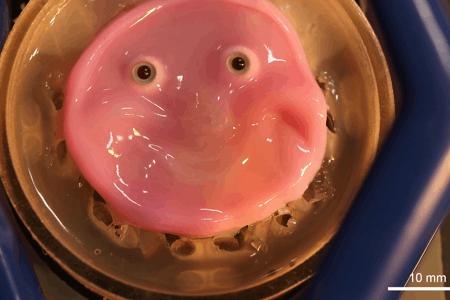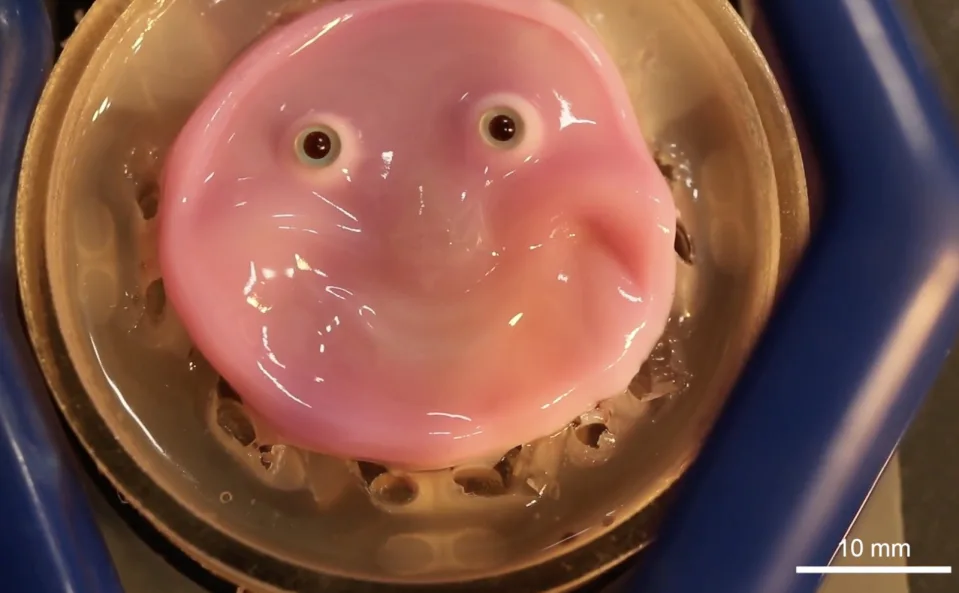In a development that blurs the lines between science fiction and reality, researchers at the University of Tokyo have unveiled a humanoid robot adorned with lab-grown human skin. This groundbreaking achievement marks a significant step towards creating robots that are not only more lifelike in appearance but also in functionality.

The Skin That Bends and Heals
Led by Professor Shoji Takeuchi at the Biohybrid Systems Laboratory, the team has engineered skin that moves, flexes, and adheres seamlessly to the robot’s mechanical frame. The secret lies in the use of collagen, a protein abundant in human skin, which provides both adhesion and flexibility. By treating the skin with plasma, researchers have successfully integrated the biological material with the robot’s underlying structure.
Perhaps most remarkably, this lab-grown skin possesses the ability to self-heal, mirroring the regenerative properties of natural human skin.expand_more This resilience promises to extend the lifespan and durability of robots in various applications.
Applications Beyond Science Fiction
While the idea of robots with living skin might sound like something out of a sci-fi novel, the potential applications are far-reaching and practical:
- Medical Advancements: Researchers can now test drugs and therapies on living human skin, offering a more accurate model than traditional cell cultures.
- Cosmetic Innovation: The cosmetics industry can evaluate products on a more realistic platform, potentially reducing the need for animal testing.exclamation
- Surgical Training: Aspiring surgeons can practice intricate procedures on lifelike models, enhancing their skills and confidence.exclamation
- Soft Robotics Revolution: This breakthrough opens doors to a new generation of soft robots with unprecedented dexterity and adaptability.
Expert Commentary and Future Directions
Krishna Manaswi Digumarti from Queensland University of Technology lauded the study’s success in seamlessly blending soft and rigid materials. However, researchers acknowledge that challenges remain, particularly in ensuring the skin’s longevity under repeated movements.exclamation
The team envisions an even more ambitious future where artificial skin is enriched with biological features like sweat glands, blood vessels, and nerves. This would enable robots to exhibit more human-like behaviors and reactions, further blurring the distinction between machine and organism.
Ethical Considerations and the Road Ahead
As with any groundbreaking technology, the development of humanoid robots with living skin raises important ethical questions. Concerns about the potential misuse of this technology and the implications for human identity are likely to spark debate as research progresses.
While there’s still much work to be done, this achievement represents a pivotal moment in the evolution of robotics. As scientists continue to refine the integration of biological and mechanical systems, we can anticipate a future where robots seamlessly blend into our lives, potentially transforming healthcare, industry, and even our understanding of what it means to be human.
This development represents a major step forward in making robots more lifelike and functional. The integration of lab-grown human skin onto a robot opens up new possibilities for research, medicine, and robotics.
The skin adheres to the robot’s frame using collagen, a protein abundant in human skin. Plasma treatment further strengthens the bond between the biological and mechanical materials.
Yes, one of the most remarkable features of this skin is its ability to self-heal if damaged, mimicking the regenerative properties of natural human skin.
Medical Research: Testing new drugs and therapies on a more realistic model.
Cosmetic Testing: Evaluating products without relying on animal testing.
Surgical Training: Providing surgeons with lifelike models for practice.
Soft Robotics: Developing more dexterous and adaptable robots.
One key challenge is ensuring the skin’s durability under repeated movement and stress. Additionally, researchers aim to add more biological features like sweat glands and nerves to make the skin even more realistic.
Yes, the creation of robots with living human skin raises questions about the potential misuse of this technology and its impact on human identity. These concerns will need to be addressed as research progresses.
This breakthrough could lead to the development of highly advanced biohybrid robots that seamlessly integrate with our lives. It could revolutionize healthcare, industry, and our understanding of the boundaries between living and non-living entities.
Stay tuned to Buzz Feed Up for the latest updates on this exciting frontier in robotics!



